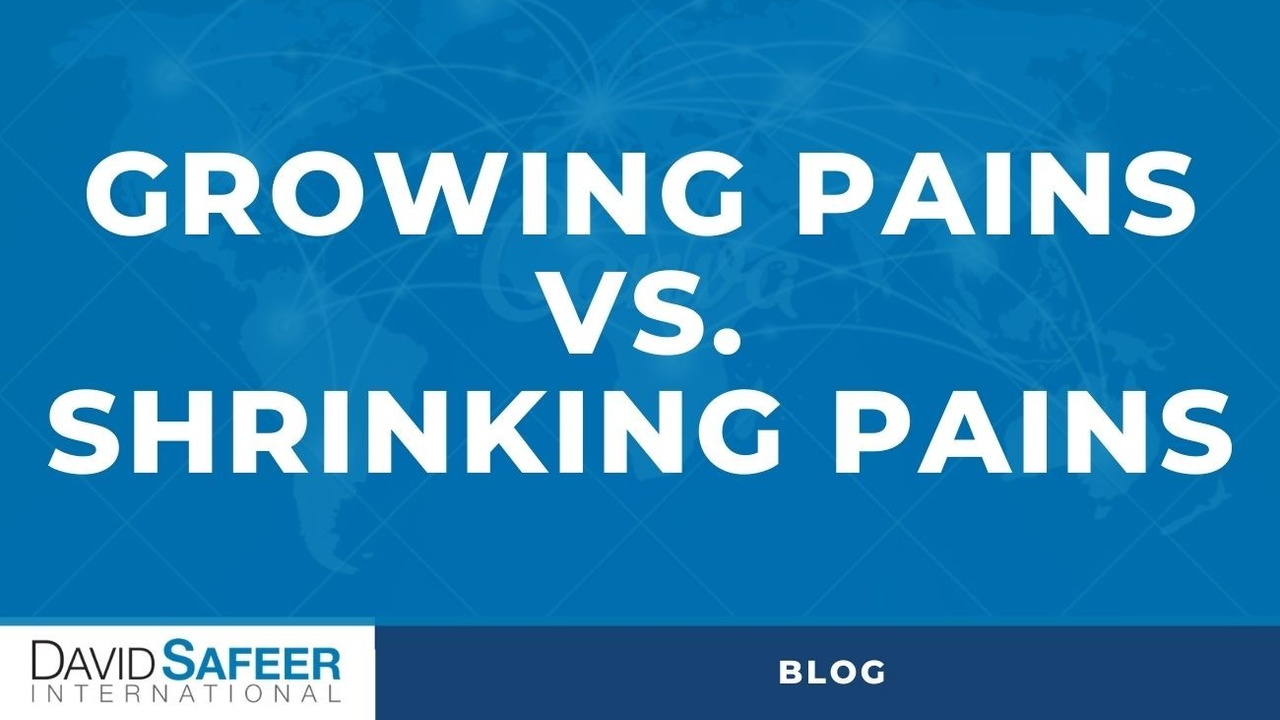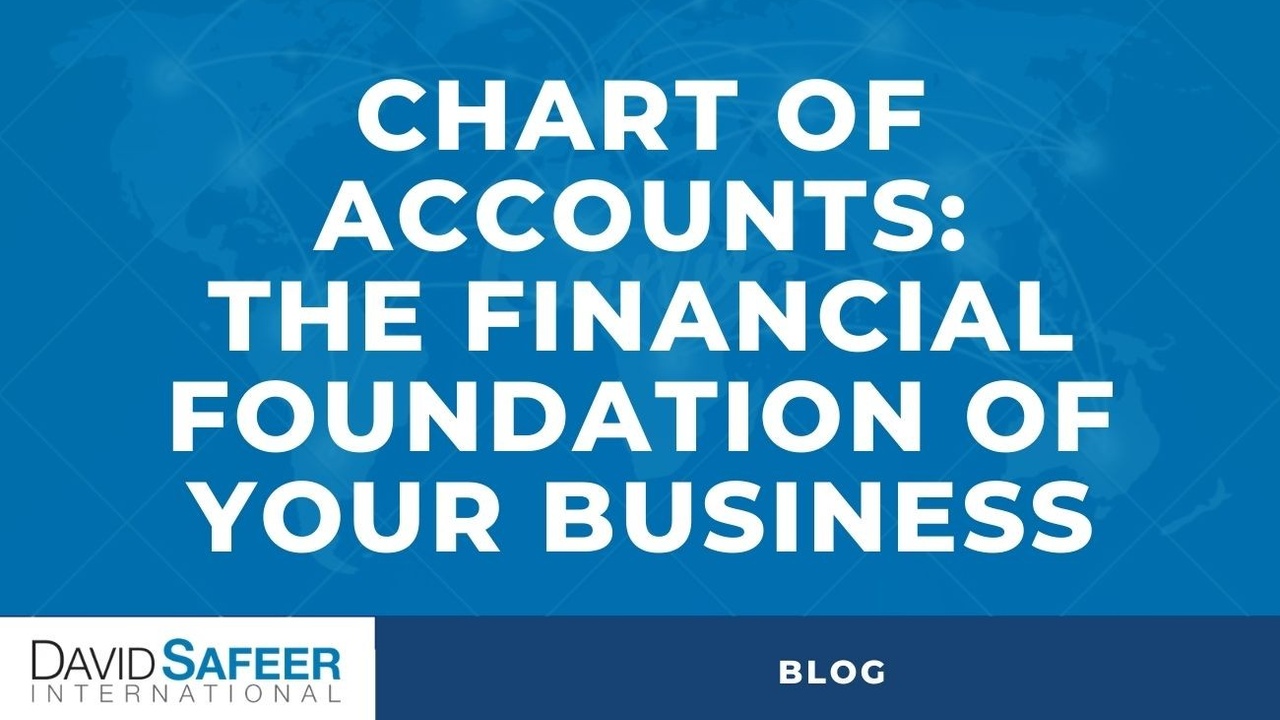Growing Pains vs. Shrinking Pains

What are two critical times when cash management is really important? When a business is shrinking and when a business is growing.
Businesses with shrinking sales have smaller profit margins to pay your bills and to pay yourself.
The result: Cash shortfalls due to a decreased amount of cash coming in.
Seems obvious, but what isn’t obvious to most businesses owners is how to:
- Cut expenses that are not critical to the core businesses
- How to get paid faster
- Slow the cash going out for critical expenses
- Maximize profit margins
- Engage employees in all of this
Growing business: You have more profit margin to pay your bills and to pay yourself.
Again, this seems obvious.
What many business owners don’t plan for is the delays of the cash coming in to pay those bigger bills.
A staggering number of businesses get themselves into serious trouble because they grow too fast and don’t have the resources in place, including access to enough cash or credit, to handle the growth.
If you like t...
Fix Your Finances

The COVID-19 global pandemic is a wake-up call to ALL business owners to take responsibility for their company finances.
I posted that financial advisors are responsible for the companies they work with to have good financial plans, including a 13-week cash flow model. Now, I am putting the responsibility 100% onto business owners. There are no more excuses.
For too long business owners have said...
"It's not about the money, it's about the people."
"I do it for the love of my craft."
"Someone else can deal with the finances."
"I want to be my own boss, but so I decide that I only want basic bookkeeping."
Now a tiny virus has told you that you are wrong.
You are in business. Business is about the numbers.
Not only numbers, but if you don't have money, you can't...
...help people
...work your craft
...let someone else worry
...be your own boss
If you survive this downturn, fix your finances.
Start with a cash flow model that tells you how long you can survive. (Put "Cashflow" in the comments if you wa...
Profit with Sustainable Cash Flow

Profit does not mean that there is cash in the bank. A growing bank account does not mean that you are making a profit.
Surprised? You're not alone. Most schools, CPAs, news reports, etc. focus on a company’s earnings, profits, and sales. That’s because those same institutions are geared toward teaching, working for, and reporting for BIG big businesses and public companies.
But if you are a small business, your most important measurements for the next 3 months or so have to do with cash:
- How much cash is coming into or going out of the company?
- What is your cash balance projected to be?
- Do you have cash or credit reserves to get you through cash shortfalls?
So don’t be fooled by “the establishment” into thinking “profit, profit, profit.”
Think: “Profit with sustainable cash flow!”
Let me know if “profit without cash” is a new concept to you, or if it’s not, how you learned about the concept!
E-mail me your comments at [email protected]
Don't Borrow Money, Just Don't Pay Your Bills

No money to pay your bills? Don't borrow money, just don't pay your bills.
You have to pay them at some point, but there are tactics to slow down money flowing out of your bank account.
But FIRST... here are some bills you need to pay on time:
Payroll.
Payroll.
Payroll.
Anything that puts you in breach of contract and puts your business, your home, or your health at risk.
Other than that, most bills can be postponed past the due date without dire consequences.
Look at bills that you owe large corporations, who are used to delays. Telephone, internet, utilities, insurance companies. You may be able to wait up to 60 days without consequences. Let them know when you'll be paying.
Suppliers: Make sure that you talk with them. Make payment arrangements. Don't surprise them. Make a partial payment. Many times your relationship is more important than delaying payment.
Mortgages and rent: Most have a no-penalty grace period. Use it when you need to.
Please, be careful with solo-entrepreneurs and small-bu...
Fortnight Cash Flow with David Safeer
On this episode of Fortnight Cash Flow, David talks with DryRun's Jeremy Burke discussing simple cash flow optimization techniques that you can implement in your own business.
Chart of Accounts: The Financial Foundation of Your Business

Most business owners' eyes glaze over when I talk to them about the "chart of accounts."
Then we talk about what they are trying to understand about their business's finances. They generally want the same thing:
- How much money am I making?
- How do I know if I'll have enough money to pay the bills?
- Which products and services make the most money?
- Do I have extra expenses that I can cut?
- Do I have enough capital to grow?
When I explain that the chart of accounts is the foundation for understanding each of those questions, they get more interested.
I explain that the chart of accounts is a list of categories.
Then I tell the business owner:
• Where sales come from
• Where expenses go
• What the assets are (what's owned)
• What the liabilities are (what's owed to others)
• What the difference is between what's owned and what's owed. This is called the “equity” in a company.
They quickly understand that with the right chart of accounts they can get all the reports they need to understand their ...
Payne Points of Interest #41 What is Cash Flow? Featuring David Safeer
Click here for the original post by Payne Points.
A True Story: Bill’s Cash Crunch

My first full-time consulting assignment was for an outdoor power equipment company, we’ll call it “Bill’s Four-Season Power”, in a rural area in western Virginia. It’s the type of place that sells gas powered lawn mowers, trimmers, and lawn tractors in the summer, then snow blowers, chain saws, and wood choppers in the winter. The store was well stocked with recognized brands and they had a lot of long-term customers including a couple of local fire departments. Four full-time repair people on staff in the service department made sure that the customers stayed happy; they could repair just about anything.
Sales were good, and they were well respected by their suppliers. They had incredible credit terms with their key manufacturers. The showroom was clean, brightly lit, and had a coffee machine so people could take their time and relax while talking to the staff about their power equipment needs.
So why was I there?
Their cash was dangerously low.
They were about to go bankrupt.
...
